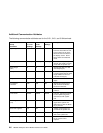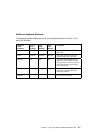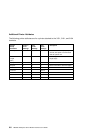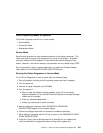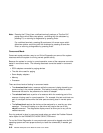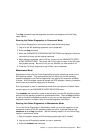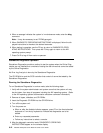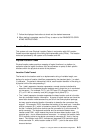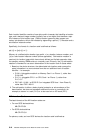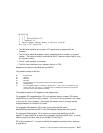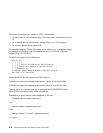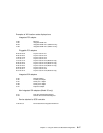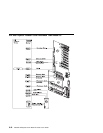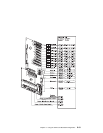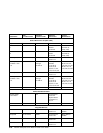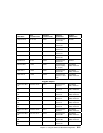
Each location identifier consists of one alpha prefix character that identifies a location
type, and a decimal integer number (typically one or two digits) that identifies a spe-
cific instance of this location type. Certain location types may also support sec-
ondary sub-locations, which are indicated by appending a period (".") character and a
sub-location instance number.
Specifically, the format of a location code is defined as follows:
pn[.n][- or /]pn[.n][- or /]...
Where p is a defined alpha location type prefix, n is a location instance number, and
[.n] is a sub-location instance number (where applicable). Sub-location notation is
used only for location types which have clearly defined and limited expansion sites;
for example, memory SIMMs slots on a memory card. Primarily, the [.n] sub-location
notation is intended for use as an abbreviation of the location code in cases where:
1. Based on the device structure, the abbreviated sub-location code conveys the
same information in a more concise form than an additional level of location
identifier -- for example:
P1-M1.4 (pluggable module 4 on Memory Card 1 on Planar 1), rather than
P1-M1-M4
P1-C1.1 (pluggable CPU 1 on CPU Card 1 on Planar 1), rather than
P1-C1-C1
P2-Z1-A3.1 (LUN 1 at SCSI ID 3 on integrated SCSI bus 1 from Planar 2),
rather than P2-Z1-A3-A1
2. The sub-location is either a basic physical extension or sub-enclosure of the
base location, but does not represent additional function or connectivity; for
example, a drawer in a rack (U1.2) or a riser card on an I/O board (P2.1).
AIX Location Codes
The basic formats of the AIX location codes are:
For non-SCSI devices/drives
AB-CD-EF-GH
For SCSI devices/drives
AB-CD-EF-G,H
For planars, cards, and non-SCSI devices the location code is defined as:
6-14 RS/6000 Enterprise Server Model H Series User's Guide



